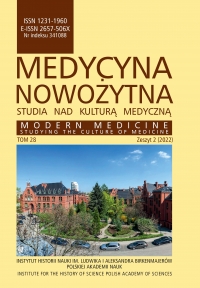Wymiar funkcjonalny, estetyczny i etyczny architektury współczesnych hospicjów
Functional, aesthetic and ethical dimension of contemporary hospice architecture
Author(s): Mieczysław K. LeniartekSubject(s): Fine Arts / Performing Arts, Architecture, Sociology, Family and social welfare, Welfare services
Published by: Wydawnictwo Uniwersytetu Jagiellońskiego
Keywords: palliative care; hospice architecture; thanatoarchitecture; aesthetics and ethics
Summary/Abstract: The subject of refl ection is the architecture of a contemporary hospice, which is an expression of social needs, tendencies in palliative medicine, and economic conditions. From the analysis of these objects, a model of a medical unit performing a therapeutic and care function emerges, taking into account the needs of belonging, respect and self-fulfillment of patients. Its program includes personalized hospital rooms, rooms for integrating patients with medical and nursing staff and volunteers, and for meeting the spiritual needs of this community. The special character of this function is emphasized by aesthetic dispositions on a rural and urban, architectural and landscape scale. Often, hospice projects also contain a symbolic message of religious or para-religious content contained in the forms of buildings and their interiors. Considerations on the architectural assumptions of hospices – those special objects in which the act of “transition” crowning human life take place, lead to the conclusion that thanks to the dispositions of a functional, aesthetic and semantic nature, the act of architectural creation acquires an ethical dimension, introducing solutions through logic, aesthetics and symbolism emotional, social, mental and spiritual order.
Journal: Medycyna Nowożytna Studia nad Kulturą Medyczną
- Issue Year: 28/2022
- Issue No: 2
- Page Range: 85-98
- Page Count: 14
- Language: Polish

